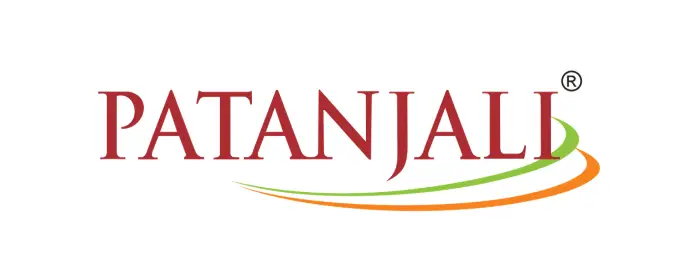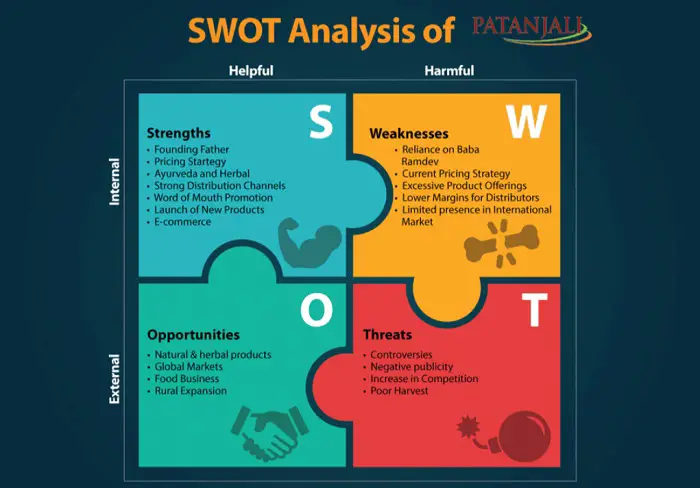Patanjali Ayurved is well-known in the Indian wellness and cosmetics industry. Their goods have been scientifically proven beneficial to the skin and are therefore certified organic. In this article, we will explore Patanjali’s competitors, and their marketing strategy and conduct a SWOT analysis to understand its strengths, weaknesses, opportunities, and threats.
Patanjali Ayurved Limited, founded in 2006 by Baba Ramdev and Acharya Balkrishna, has emerged as a prominent player in the Indian consumer goods industry. Known for its focus on natural and Ayurvedic products, Patanjali has gained significant market share through its unique marketing strategy. Their clients have developed such faith and reliance in the Patanjali branding that they even name specific ailments after it helped them.
Curious to know more? Keep on reading and gain knowledge on Patanjali’s marketing strategy.
See Also: Case Study: Marketing Strategy of Cadbury
Patanjali’s Marketing Strategy: Ayurvedic Products
Baba Ramdev established the firm presently recognized as Patanjali Ayurved in 1995. He had been a regular yoga instructor up to that point.
He never imagined that his ideas would become so widespread and lucrative. Patanjali Ayurved has become one of the world’s preeminent Ayurvedic manufacturers in just over two decades.
The longevity and success of Patanjali Ayurved, a pioneer in the Ayurvedic industry, is no surprise. You can buy their wares from anywhere worldwide because they are translated into numerous tongues and distributed worldwide. Their high-quality products are another reason for their market dominance.
That’s not the best part. The all-natural ayurvedic remedies they produce have earned them widespread renown. Here you can read the in-depth profile of Patanjali Ayurveda to find out more about the company’s background and the strategies it has employed to become so successful.
Analysis of Patanjali’s marketing strategy
Patanjali Ayurved is rapidly becoming a dominant player in the Ayurvedic industry. They’ve accomplished this by giving their fans access to cutting-edge methods that work, making their items of a high standard, and keeping their prices low.
For other ayurvedic companies, now is the moment to take notice of Patanjali, as they, too, are destined for rapid expansion shortly. Their competitive pricing, high-quality products, and extensive distribution network have helped them dominate the market.
They’ve got a leg up on the competition thanks to brilliant product launches and ferocious advertising efforts.
Patanjali Ayurved is a company to watch, even if you’re an Ayurvedic customer searching for a good value or a competitor hoping to expand your market.
See Also: Dove SWOT Analysis: Everything to Know
The Patanjali Method for Online Promotion
A corporation can gain market dominance with the help of digital marketing. To become successful, Patanjali Ayurved relied on online advertising methods.
Patanjali’s online campaigns promote the brand as an authority on holistic health and wellness solutions.
Search engine optimization (SEO), pay-per-click advertising (PPC), website design as well as development (D&D), social media engagement (SMM), plus email marketing are all part of the company’s extensive digital marketing plan.
They spent money on sponsored search ads and put up consumer-friendly specialized content. They also built a solid e-commerce infrastructure and optimized their site to attract more customers.
Patanjali has had great success expanding its customer base through online means. The website is well-organized and provides many data regarding the company’s wares. In addition, there are video guides on the site that explain how to operate the tools.
After that, they started advertising on social media sites like Facebook, Twitter, and Instagram. PatanjaliAyurvedad could spread its name far and wide by employing these methods.
How Patanjali Ayurved used these four Tactics to Rule the Industry
Patanjali Ayurveda’s market cap increased from zero to twenty billion dollars in 2016. The company’s ayurvedic items are its bread and butter, sold offline and online.
Patanjali’s marketing strategy and quick expansion in India and beyond can be attributed to these methods.
Strategically Directed Advertising
Successful businesses employ targeted marketing methods to ensure their messages reach the appropriate people at the appropriate time.
Patanjali reached out to its users through various platforms using strategic marketing initiatives. For instance, they directed email advertisements toward female consumers to boost product sales.
The ultimate goal was to have these newly converted customers continue to buy Patanjali’s wares even when discounts and special offers were unavailable.
Targeted marketing techniques are essential for companies of various sizes to stand out in a crowded marketplace.
You can turn them into devoted customers when you know your audience and communicate with them effectively through email, social media, PR stunts, etc.
See Also: What are the Objectives of Advertising?
Face Value
In large part, Patanjali’s success may be attributed to its efforts to (1) cultivate a favorable public perception of its brand and (2) engage with its target audience, the consumers.
They did this to cultivate a loyal customer base that would promote the brand and its offerings on various social media sites.
They were able to attract many customers from outside of India. In addition, the products’ modest prices allowed them to be accessible to households with limited resources.
Marking Goods
Products, like companies, benefit significantly from consistent branding efforts. Patanjali is a well-known Indian Ayurveda company that has always placed a premium on its brand.
Patanjali’s branding goals are ambitious: to rule the Indian market and establish meaningful customer relationships.
So that customers can make educated purchases, businesses employ appealing slogans and keep in mind all product information is readily available.
Managing and dividing markets
Accurately determining who you’re marketing to and then providing them with precisely what they need is paramount.
Patanjali Ayurved did this by conducting extensive market research and crafting a winning multi-channel advertising plan.
Marketers first identified distinct groups of consumers based on demographic characteristics such as age, gender, and other factors and then created advertisements tailored to each group.
Further, they kept a careful eye on the outcomes of their efforts to adjust the course as required.
The Patanjali SWOT Analysis
Conducting a SWOT Analysis of Patanjali’s marketing strategy as a brand is essential. The SWOT Analysis is a technique managers use to evaluate the good and bad aspects of a company’s future.
Patanjali is a one-of-a-kind company that demonstrates several qualities, but it faces its challenges and dangers hold back; let’s look for further details:
Strengths
A few strengths of Patanjali are as follows:
Propagandist for the Brand
With Baba Ramdev’s charisma and international reputation as a health plus yoga expert, the company benefits greatly from having him serve as its brand ambassador.
Perfect Timing, Ideal Item
Patanjali’s product catered to the needs of the masses because it rode the wave of interest in natural and organic foods and remedies.
Marketing With a Price
Patanjali’s prices are consistently 5-10% lower than the market average. This is a massive advantage for a market as price-sensitive as India’s.
Weaknesses
Patanjali has the following weaknesses:
Logistics
Patanjali’s lack of long-term agreements with transporters has hindered their planning and driven up costs.
The Fall in Income
For the first time since 2013, the company’s consumer goods division had a loss in revenue of more than 10 percent in the fiscal year ending in March of 2018. Their high-volume, low-price model has begun to backfire.
Not Enough Foreign Business
However, unlike its competitor Dabur, Patanjali does not have a significant customer base in the ASEAN and European regions. Patanjali’s success is restricted to the Indian market because of the country’s poverty and the sway of Baba Ramdev. They need to broaden their operations internationally.
Opportunities
Get the opportunities of Patanjali’s SWOT analysis from the points below:
International Markets
Patanjali can benefit from the sizable ex-pat population in India. In the United States, where the NRI audience is the brand’s nationalist and heritage-driven image, Patanjali has its second-largest market, according to one case study. This expansion can be into a legitimate global marketing and sales plan.
Aiming For The Luxury Market
Up till now, Patanjali has solely concentrated on producing inexpensive, widely utilized items. Utilizing its natural and heritage-based brand, it may promote more expensive and higher-quality items to compete with and appeal to superior products.
Threats
With all its good qualities, Patanjali’s SWOT analysis also has some threats, such as,
Political Instability:
The corporation will undoubtedly experience the political winds of change due to the brand’s high level of politicization. Due to their high level of partisanship, the potential impact of a change in government, and the potential for public disgrace, investors often do not support these organizations.
Whistle-Blowers:
There have been rumors about Patanjali items losing quality. Though unsupported by data, such rumors can potentially harm even the most positive brand perceptions over time.
Increasing Competition
Established brands like HUL and Dabur have implemented new tactics to compete with Patanjali, which has lost its element of surprise. These brands have adapted to the new Ayurveda market of consumers.
As all other FMCG firms are now looking to reclaim their portion of the market, Patanjali is a strong and heavily volume-driven company with many opportunities but mounting threats. To overcome these challenges, the corporation must use ever-smarter marketing strategies and the effectiveness of digital marketing.
Frequently Asked Questions
Which companies does Patanjali face as rivals?
Patanjali's main rivals are Dabur India and Procter & Gamble. HUL Nestle ITC Marico (Hindustan Unilever Limited) Herbal Baidyanath Emami from Himalaya.
Which Patanjali's marketing strategy achieved such great success?
Baba Ramdev's advocacy for chemical-free products and the Swadeshi brand has been successful for Patanjali.
How does Patanjali advertise its products?
Patanjali's formulations are a masterful synthesis of Ayurveda and natural substances. The company's marketing campaign emphasizes its herbal products by highlighting their many positive attributes. The Swadeshi goods produced by Patanjali are popular in India.
What is the SWOT analysis, and how does it apply to the Patanjali Ayurveda company?
Patanjali Ayurved's SWOT analysis considers the company's fortes and potential drawbacks and threats. One of the world's foremost manufacturers of pharmaceuticals and vaccines is Patanjali Ayurveda. Internal aspects include the company's strengths and shortcomings, while external ones include opportunities and hazards for Patanjali Ayurveda.
Does Patanjali practice eco-friendly advertising?
As people's knowledge of environmental issues and the need to take personal responsibility grows, so does the demand for eco-friendly items among the educated. Patanjali is a popular name in eco-friendly goods.
Conclusion
The positive impression that consumers form of a company is founded mainly on the value they derive from using the product and the results they want to achieve. Based on the above case study results, it is clear that many of Patanjali’s customers are pleased with their purchases. They may have done so because the product was quickly within their price range or because it effectively resolved their health issue.
Customers are more likely to stick around if they’re happy. Patanjali’s marketing strategy is successful because it has built a brand identity that appeals to the national pride of every Indian. However, opponents like Naturals, pure roots, and Vindhya herbals should not be ignored. Before any rival brand can launch and steal Patanjali’s thunder with spiritually-motivated advertising, the company must deliver on its promises to keep people coming back.







